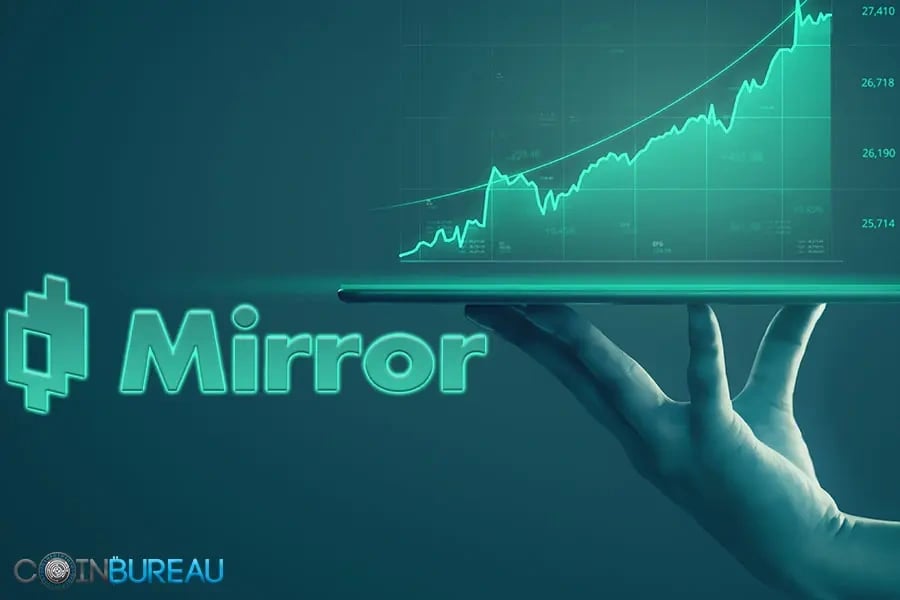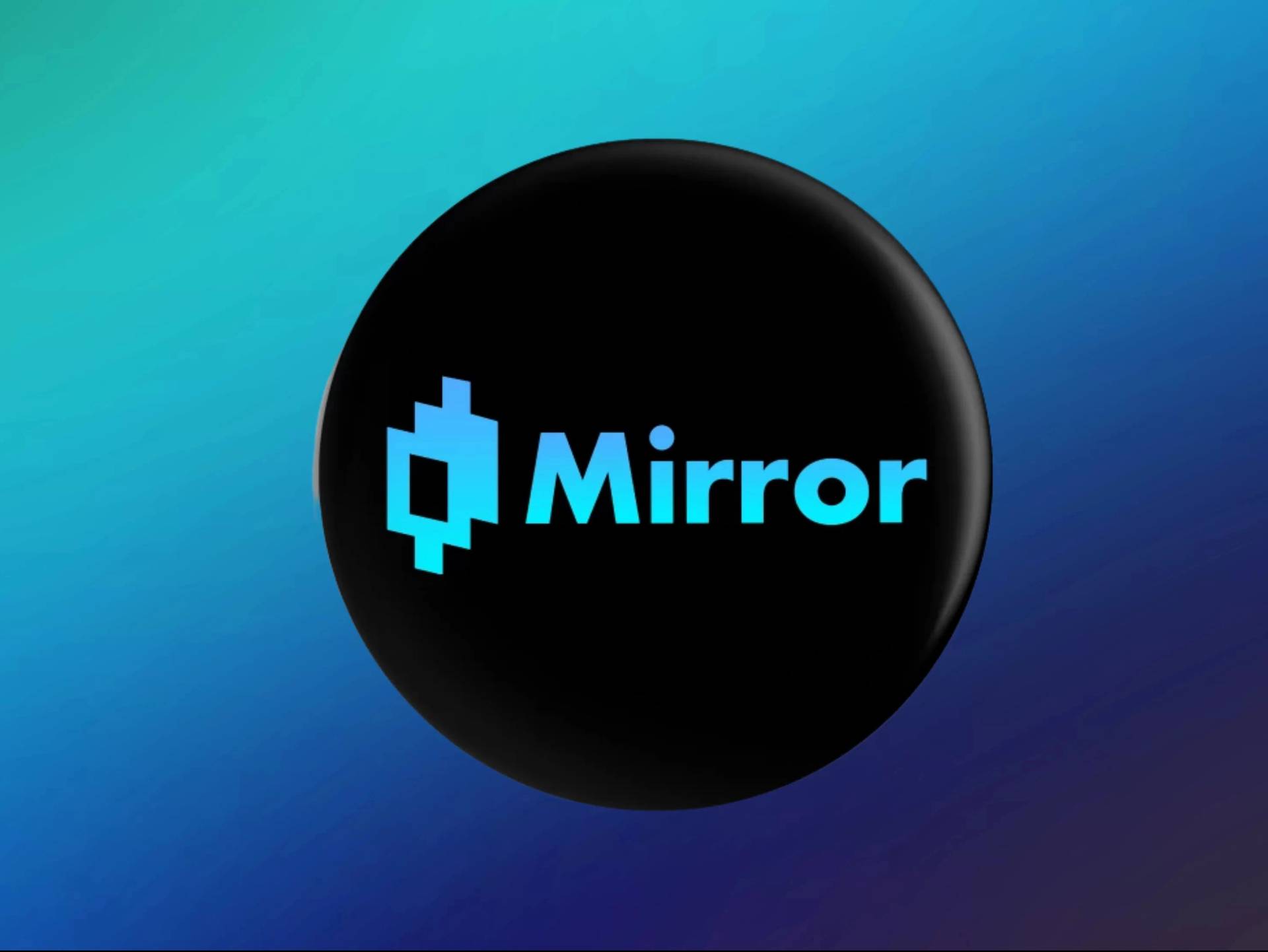Subscribe to wiki
Share wiki
Bookmark
Mirror Protocol
The Agent Tokenization Platform (ATP):Build autonomous agents with the Agent Development Kit (ADK)
Mirror Protocol
Mirror Protocol (MIR) is a DeFi (decentralized finance) protocol powered by smart contracts on the Terra network that enables the creation of synthetic assets, mAssets. mAssets mimic the price behavior of real-world assets and give traders access to price exposure without owning or transacting real assets[1][2].
Overview
Mirror Protocol is an interchain DeFi (decentralized finance) protocol, that enables the creation of synthetic assets called (mAssets). The minting of mAssets is decentralized and is undertaken by users throughout the network by opening a position and depositing collateral. Mirror ensures that there is always sufficient collateral within the protocol to cover mAssets, and also manages markets for mAssets by listing them on against TerraUSD (UST)[3].

To establish UST trading pairs for mAssets and for the MIR, the protocol's governance token, Mirror relies on Terraswap, an automated market maker (AMM) protocol implemented with smart contracts on the Terra blockchain. Terraswap creates automated markets for pairs of tokens (or native Terra coins like UST) called pools which enable users to exchange one asset for the other directly on-chain. Pools maintain balances of both assets, to which users can provide liquidity in exchange for reward-bearing LP tokens (tokens that are given to liquidity providers).
The MIR token is minted by the protocol and distributed as a reward to reinforce behavior that secures the ecosystem. With it, Mirror ensures liquid mAsset markets by rewarding MIR to users whose stake obtained through providing liquidity. MIR can be staked to receive voting privileges and to earn a share of the protocol's Collateralized Debt Position (CDP) withdrawal fees.
MIR Token
The Mirror Token (MIR) is Mirror Protocol's governance token. Currently, it must be staked to vote on active polls and is required as a deposit for making new governance polls. Users that stake MIR tokens also earn MIR rewards generated from withdrawing collateral from Collateralized Debt Positions (CDP) within the protocol[3].
MIR is also used to incentivize users to farm yields by staking LP tokens which were minted by providing liquidity for MIR and mAssets. Yield is paid to the users from MIRs that are newly minted through annual inflation, which gradually increases the total supply of MIR until the end of 4th year.
MIR Distribution
According to the Mirror website, there are planned to be a total of 370,575,000 MIR tokens to be distributed over 4 years. Beyond that, there will be no more new MIR tokens introduced to the supply.
A total of 54.9 million tokens were available at the genesis of Mirror Protocol. The distribution of these tokens was made as below:
- UNI Airdrop: 16.66% (9.15 million) tokens were airdropped to Uniswap (UNI) holders.
- LUNA staker airdrop: 16.66% (9.15 million) tokens were airdropped to LUNA stakers.
- Community Pool: 66.66% (36.6 million) tokens were allocated to the community pool.
The total supply of MIR tokens will increase for 4 years due to inflation until the total token supply becomes 370.575 million.
The distribution structure at the end of year 4 will be as follows:
- Airdrop: The airdrop amount which was originally distributed to UNI holders and LUNA stakers will account for 4.9% (18.3 million) of the total token supply.
- LUNA staking reward: 4.9% (18.3 million) will be distributed to LUNA stakers throughout the first year since the launch of the Mirror Protocol. MIR will be distributed every 100,000 blocks (approximately once every week) to Luna stakers only during the first year, starting from block height 920,000. The snapshot will be taken every 100,000 blocks to determine who is eligible for the staking reward distribution.
- mAsset LP Staking: 45.1% (167.27 million) tokens are distributed to all mAsset and mAsset (mETH) staking pools by the end of year 4. Tokens are distributed daily to each staking pool (initially 13 pairs for each Mirror and mETH) based on their weight compared to other assets.
- MIR LP Staking: 10.4% (38.6 million) tokens are evenly distributed to MIR-UST and MIR-UST (mETH) staking pools by the end of year 4. MIR-UST pair has an initial weight of 300%, which is 3 times the initial weight of mAssets. Tokens are distributed on daily basis.
- Community Pool: 34.6% (128.1 million) of total MIR supply will be distributed to the Community Pool by the end of year 4.
Mirror Wallet
Buying Tesla (mTSLA) and Google (mGOOGL) with Terra (UST) using Mirror Protocol
Mirror Wallet is a non-custodial wallet maintained by ATQ Capital. Mirror Wallet allows users to purchase synthetic assets tracking the prices of the 12 most popular US technology stocks, including Apple Inc., Google, Tesla Inc., Netflix, Twitter, Microsoft, Amazon, and Alibaba, using TerraUSD. Mirror Wallet is built on Mirror Protocol and new assets beyond the initial 12 synthetic assets can be introduced by anyone holding MIR tokens. The proposal would be put to a vote, and if the decentralized autonomous organization responsible for Mirror's governance passes the proposal, the new asset would be added[4].
Partnerships
On December 8, 2020, the Mirror Protocol announced its partnership with cross-chain data oracle Band Protocol, integrating price feeds for an initial set of assets, covering blue-chip stocks, commodities, and exchange-traded funds (ETFs). To ensure that the price of a mAsset is pegged to the real asset, the system integrated low-latency and decentralized oracles from Band Protocol, which update every 15 seconds on the BandChain decentralized oracle network[5].
On December 24, 2020, the Mirror Protocol announced its partnership with Injective Protocol, a high-speed layer 2 derivatives exchange. Injective’s new feature enables users on their Solstice Testnet to access the $90 trillion stock market in a decentralized manner, powered by Band Protocol’s oracles. Beginning with Tesla, Airbnb, Google, and Amazon, Injective will continue to add new markets to its platform, leveraging Mirror’s market prices to enable global access to stock futures[6].
See something wrong?
The Agent Tokenization Platform (ATP):Build autonomous agents with the Agent Development Kit (ADK)
